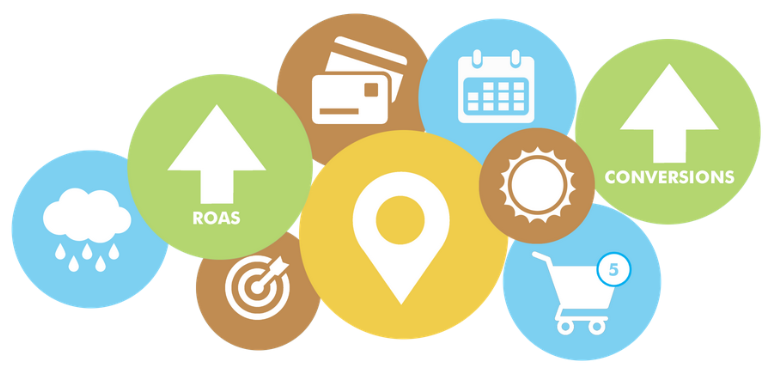Understanding a key ambient driver of consumer buying behaviour helps retailers generate better returns by targeting the right audience at the right time.
Retailers continue to pour an ever-greater share of their marketing budgets into digital alternatives in order to attract customers and capture sales. From email marketing to display advertising, from paid search to social media there is no shortage of options retailers can leverage to build awareness and encourage customers to visit websites and stores. It has never been easier to reach out to potential shoppers. It is also far too easy to squander budget by targeting consumers who are not in a buying frame of mind at a given time.
There are several avenues a retailer can pursue in an attempt to optimise the performance of their digital marketing activities. But, in the end, knowing when to spend and when not to spend, knowing what product to feature, knowing which markets and individuals will be most receptive to messaging are critical to increasing clicks and conversions. “Context is King” when it comes to consumer spending and retailers with access to the right data-driven insights can dramatically improve their metrics and maximise their digital marketing budgets.
Contextually-based marketing can mean several things but one way retailers can view it is having an understanding of the immediate environment a consumer is facing and resulting mindset in regards to purchasing this creates. Aligning advertising and marketing messaging to the particular needs, wants, and circumstances of one’s audience increases relevancy, improves customer experiences and brand image, and drives sales. In a world where behavioural targeting and use of cookies is being more heavily restricted, there is a powerful contextual driver retailers and brands should look to leverage – the weather.
No other external variable influences consumer purchasing as immediately, frequently, and meaningfully as the weather. However, meteorological data in a vacuum is not the same – nor nearly as useful and effective – as weather-driven demand analytics. Developed from detailed purchase data, weather-driven demand analytics put weather-related factors into a consumer context that accounts for regional, temporal, and demographic characteristics. Temperature triggers or similar approaches do not embody this critical consumer context. After all, a consumer reaction to 18◦ C is far from uniform as the answer is different in London than in Glasgow; different if it is March or July or October; and different across various products.
SUPERCHARGE SALES BY PROMOTING INTO FAVOURABLE WEATHER
One constant Planalytics has seen in our work with retailers and consumer brands is that campaigns that overlap with favourable, weather-induced demand leads to a larger than expected sales boost. This “synergistic effect” emerges when marketing to audiences where the weather is creating demand and a product is highly relevant to them at that time. Marketing or advertising “in market” products leads to situations where sales were notably higher than the expected promotional lift and weather lift individually suggested.
For example, if a digital campaign for spring jackets has historically generated incremental sales of 15% and weather-driven demand metrics point to an additional 10% boost, a business may see 40% more in category sales. This additional 15% over the expected 25% lift (15% for promo and 10% for weather) is the synergistic effect of targeting an audience with a product message while a weather “tailwind” is also contributing to demand.
The old adage of “make hay whilst the sun is shining” definitely applies and businesses should utilise weather-driven demand analytics to take advantage of opportunities where this synergistic effect can inflate performance results.
Conversely, retailers should view negative weather backdrops as opportunities to delay campaigns, save budget for another time, or shift spend to different markets or products. Reaching out to consumers who are not “in market” for particular items is very likely to be wasted spend that produces disappointing results.
USING WEATHER IN CONTEXT GETS RESULTS
Optimising digital marketing campaigns becomes easier once retailers have access to demand insights that have translated the complex market-by-market, time of year, demographic, and product-specific interactions of weather and consumer purchasing. The following examples highlight some of the benefits businesses have seen when marketing with weather-driven demand analytics.
- Website Optimisation: A clothing brand featured men’s t-shirts on the homepage for customers in a specific region as warmer spring weather finally arrived in May (weather “headwinds” depressed sales in March and April). The favourable weather combined with the featured items took advantage of pent-up demand and these products saw more than a 250% increase over the prior period.
- Email Marketing: A restaurant chain decided to email customers in select cities a “come in from the cold” message promoting specialty hot coffee drinks (without a coupon or incentive). Tens of thousands of incremental units were sold – in a single day! – versus the control group in the same cities that received a general company branding message.
- Digital Advertising: A retailer ran a variety of social media adverts using personalisation based on previous outdoor product customers and other audience selection criteria. All campaigns generated additional ROAS (return on advertising spend) but the campaigns that used weather-driven demand analytics to target products to promote by location and week saw ROAS increases that were 3 to 4 times the gains captured with traditional cookie-based behavioral targeting.
Weather-informed demand analytics offer a proven way to increase digital marketing effectiveness and capture market share by putting relevant content in front of consumers that are more likely to buy. With privacy concerns and major platforms eliminating much of the cookie-based targeting options advertisers have relied on heavily for years, understanding the weather’s role in creating and destroying demand on a day-to-day basis could be exactly the tool businesses need to add to their digital marketing toolbox.
To find out more about Planalytics and the services they provide to the retail industry, click here.
This article was also published in The Retailer, our quarterly online magazine providing thought-leading insights from BRC experts and Associate Members.

